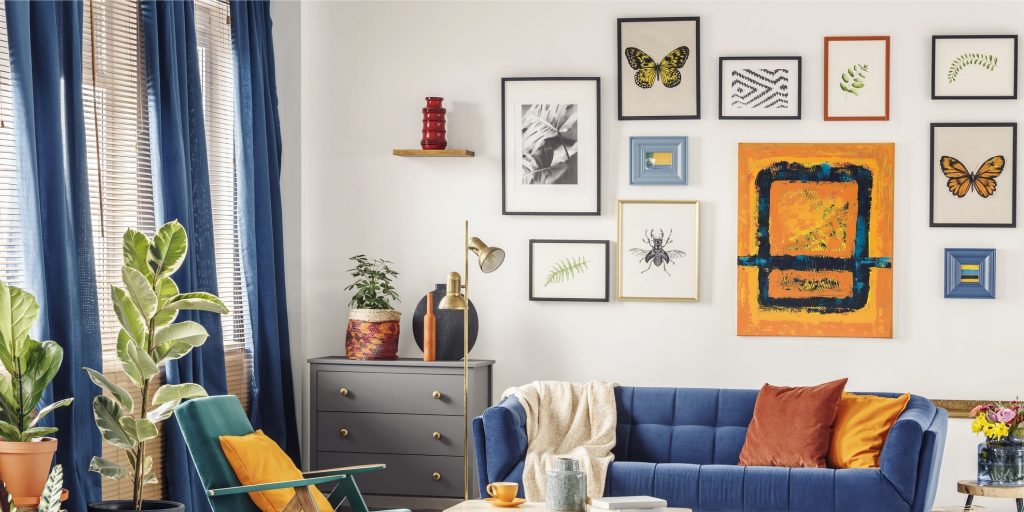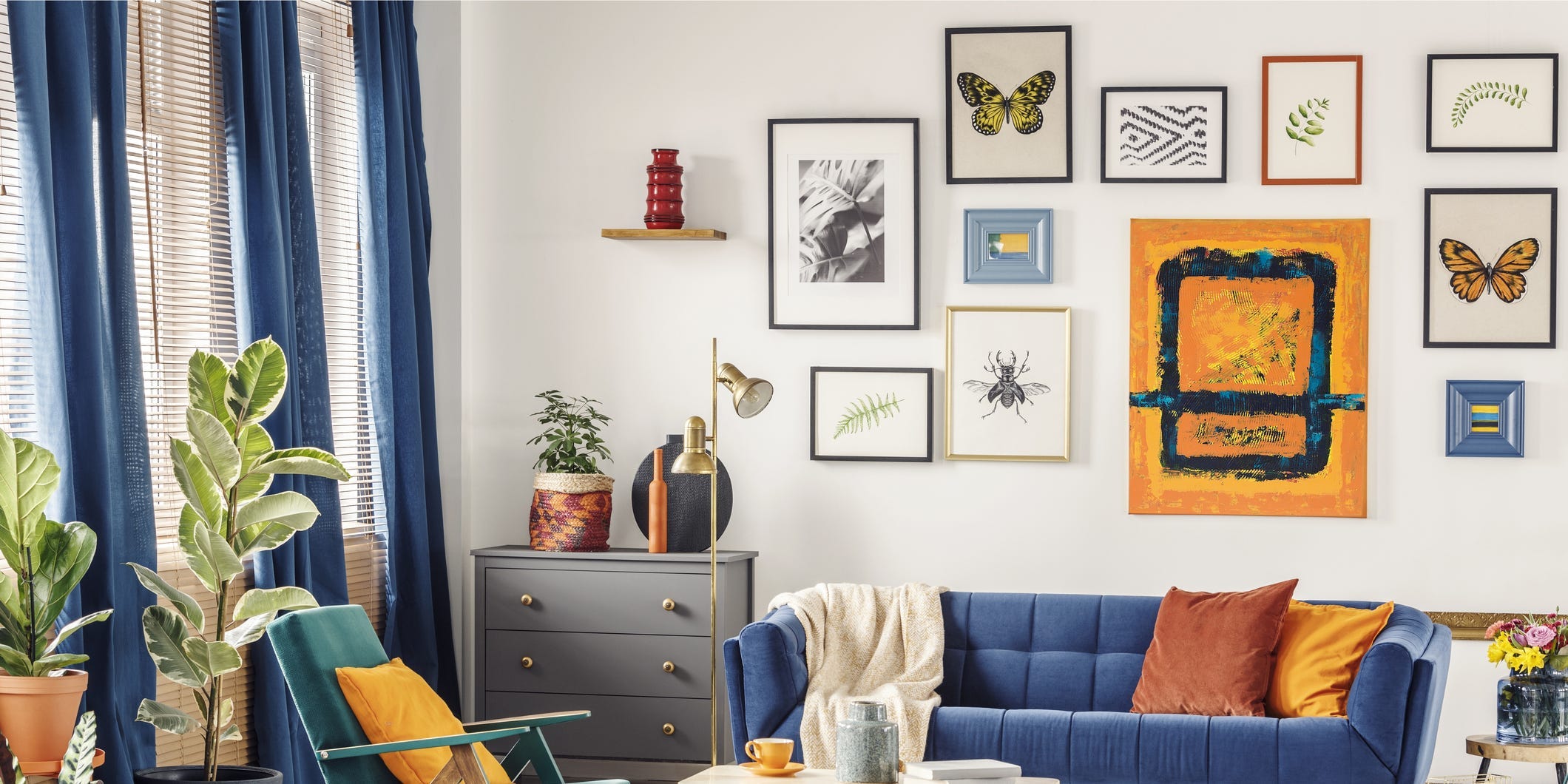
KatarzynaBialasiewicz/Getty Images
- A gallery wall is a great opportunity to turn your memories into a striking work of art.
- Make sure to always take time to draw out your layout before you start hammering.
- Mixing different frames and mediums will result in an even more interesting statement piece.
- Visit Insider's Home & Kitchen Reference library for more stories.
A gallery wall is one of the most striking yet cost-effective ways to add a touch of visual interest to a blank wall; it's great for showcasing memories or smaller pieces of art while commanding the attention of a given room.
There can be a lot of trepidation when it comes to curating a gallery wall in your own home – but filling your walls with unique and joyous pieces requires no budget or pretentious art world prerequisites. "All you have to do is pick pieces that make you feel something," shares Candita Clayton, the renowned gallerist behind Candita Clayton Gallery in Pawtucket, RI. "If that's your jumping-off point, you'll be able to make anything work."
If you've never been sure how to get started, these expert tips promise to take all the stress out of curating and executing your own gallery wall at home.
Identify the subject matter
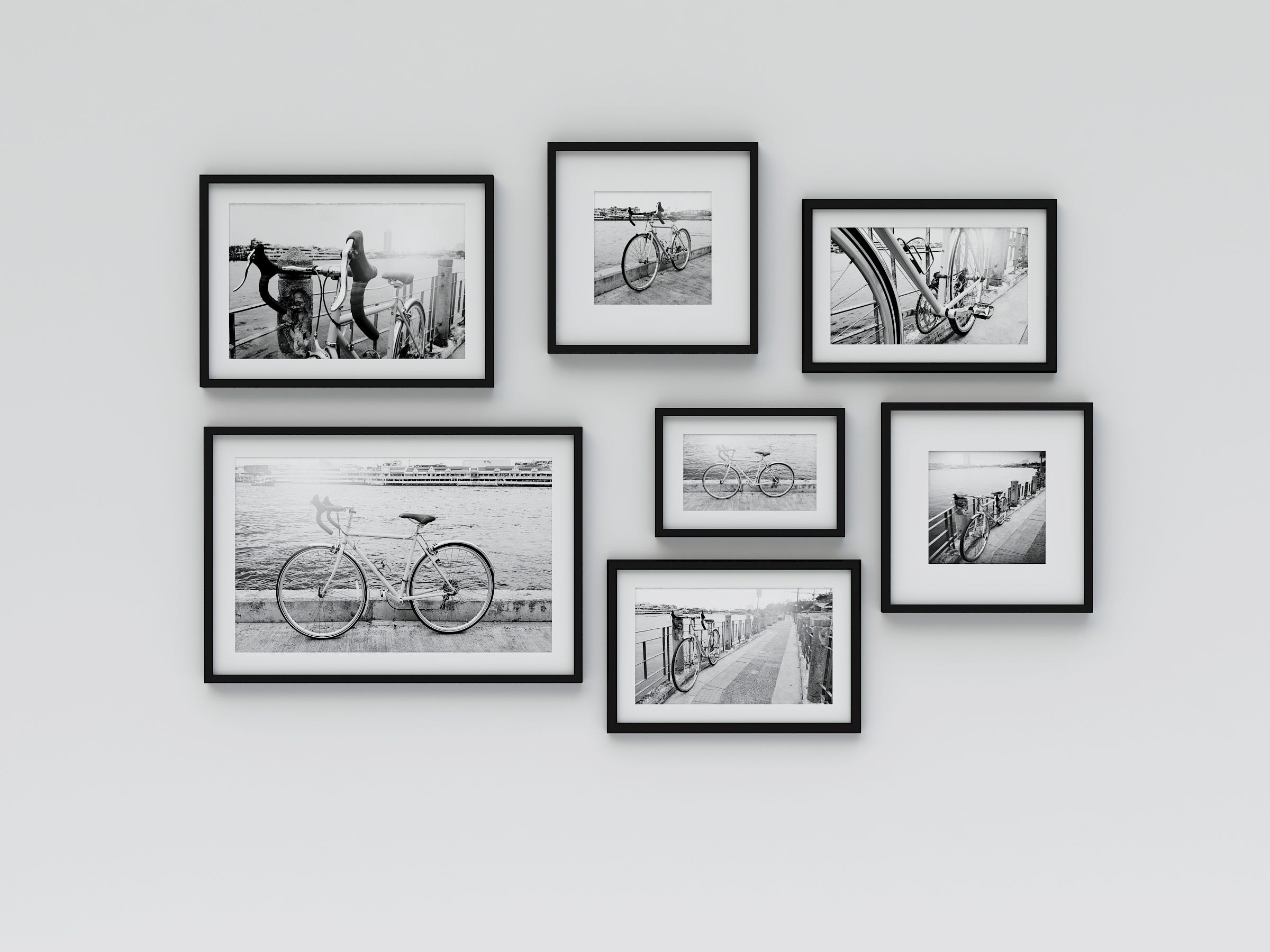
Baitong333/Getty Images
According to Jessica Davis, interior designer at JL Design, the very first thing to do is take a step back and really decide what your subject matter will be. Is this gallery wall going to be family photos only, children's art, travel photos/memorabilia – or an eclectic mix of all of the above?
Let the frames tell the story
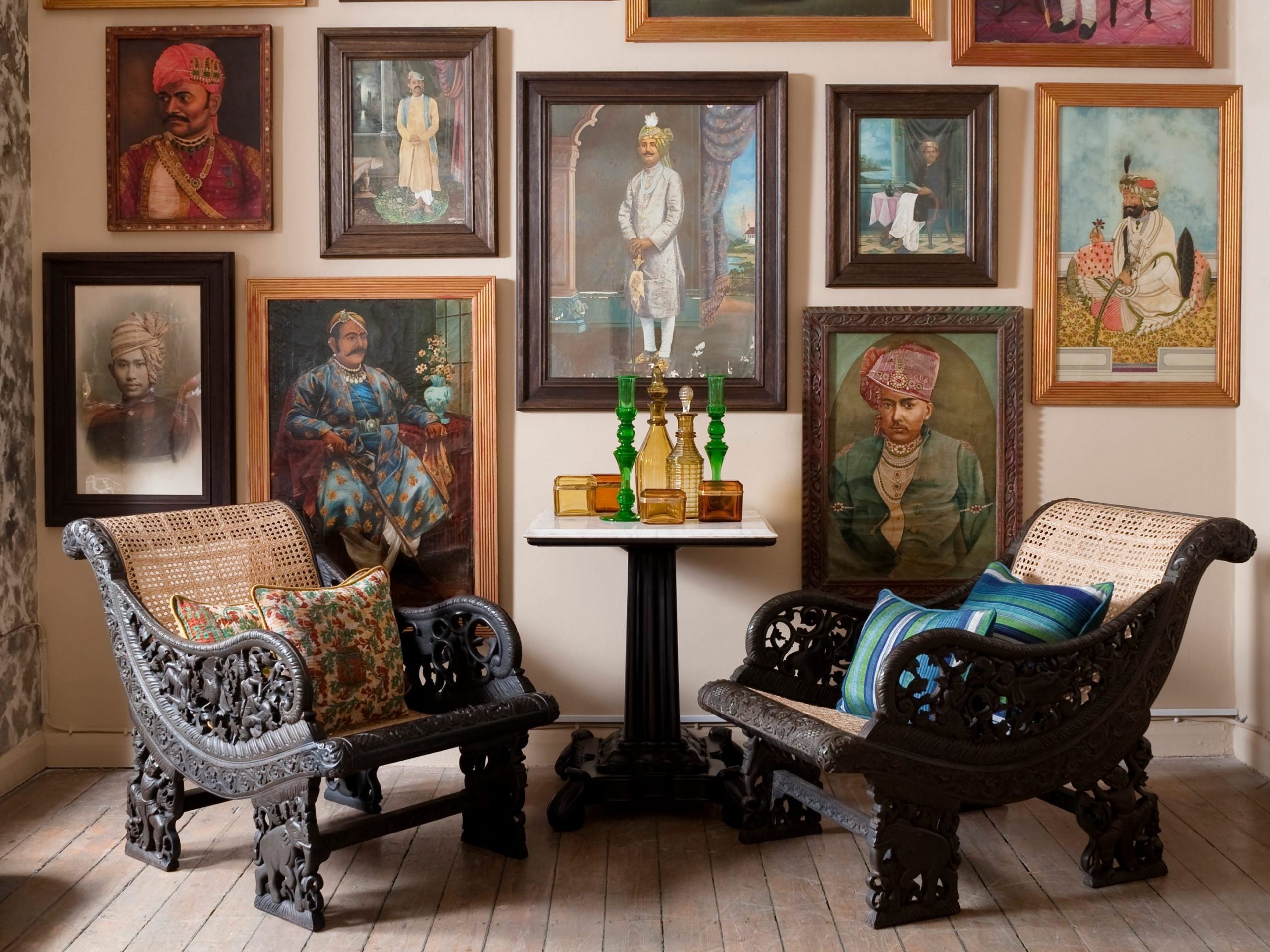
Andreas von Einsiedel/Getty Images
"When hanging one's own art collection and gallery, I would emphasize that the frame tells part of the art story, and frame selection is important to the process," says Lisa Howie, curator consultant to the Hamilton Princess Hotel's contemporary art collection. "Simple, minimal frames for example can help to communicate the art," she says. "This allows the art to really stand out on its own."
Start with a template

Rawpixel/Getty Images
According to Nikki N. Klugh, owner and principal designer at Nikki Klugh Design Group, Inc., a template will give you an idea of what the final product will look like and show you where to hang each frame - but it will also allow you to see exactly how many frames and pieces of art you'll need to ensure a full gallery wall.
Whether you're doing an organic pattern - where things feel random but are actually very intentionally placed - or a linear pattern like a grid, proper planning will allow you to plan exactly what size frames you'll need to achieve the desired look.
Nail the sizing
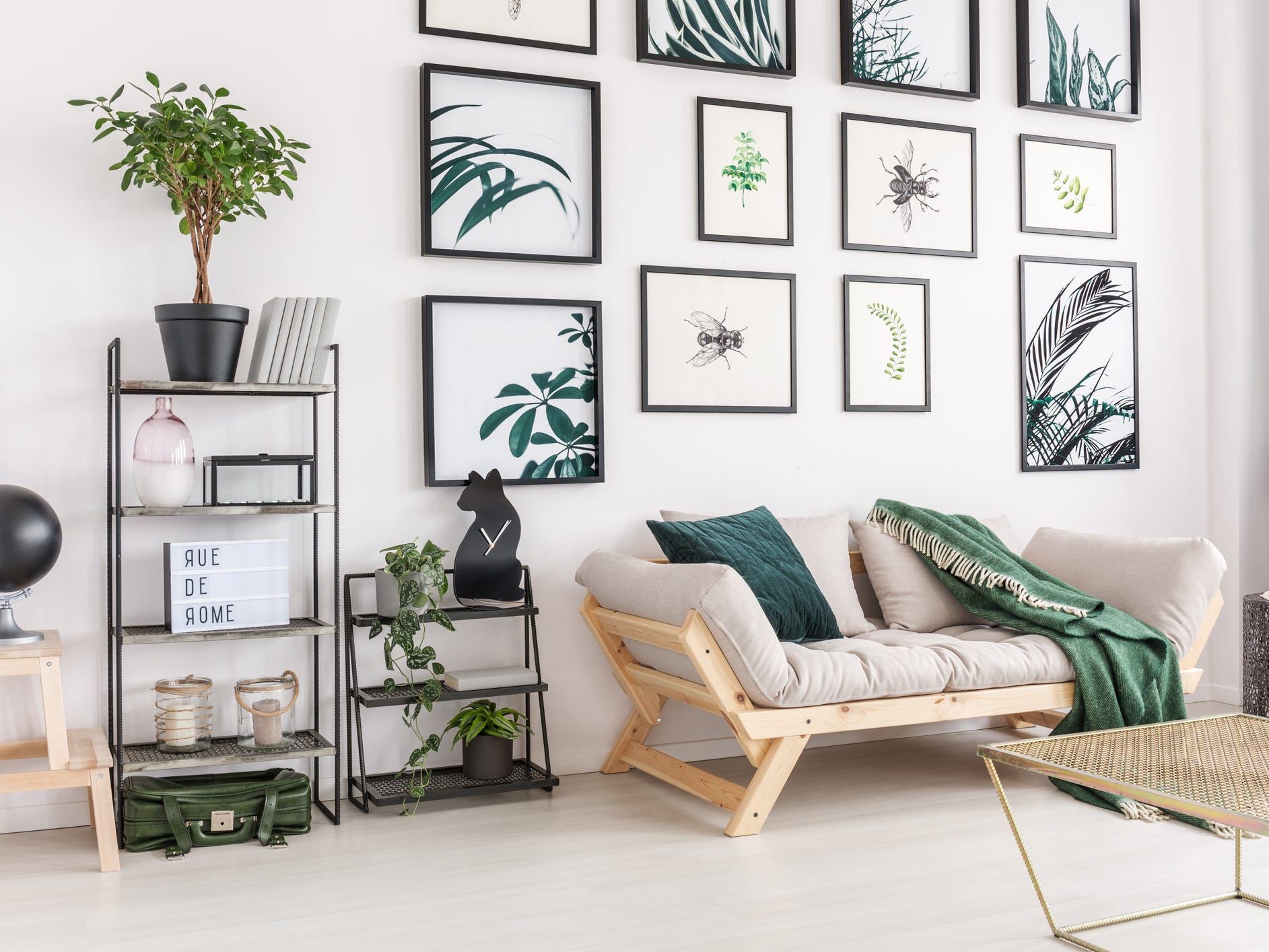
KatarzynaBialasiewicz/Getty Images
"A good rule of thumb for gallery wall sizing is to keep the entire collection between two-thirds to four-fifths of the size of the wall," shares Klugh. "This ensures your art piece fits on the wall perfectly. Not too big, not too small. Just right."
Consider adding mirrors
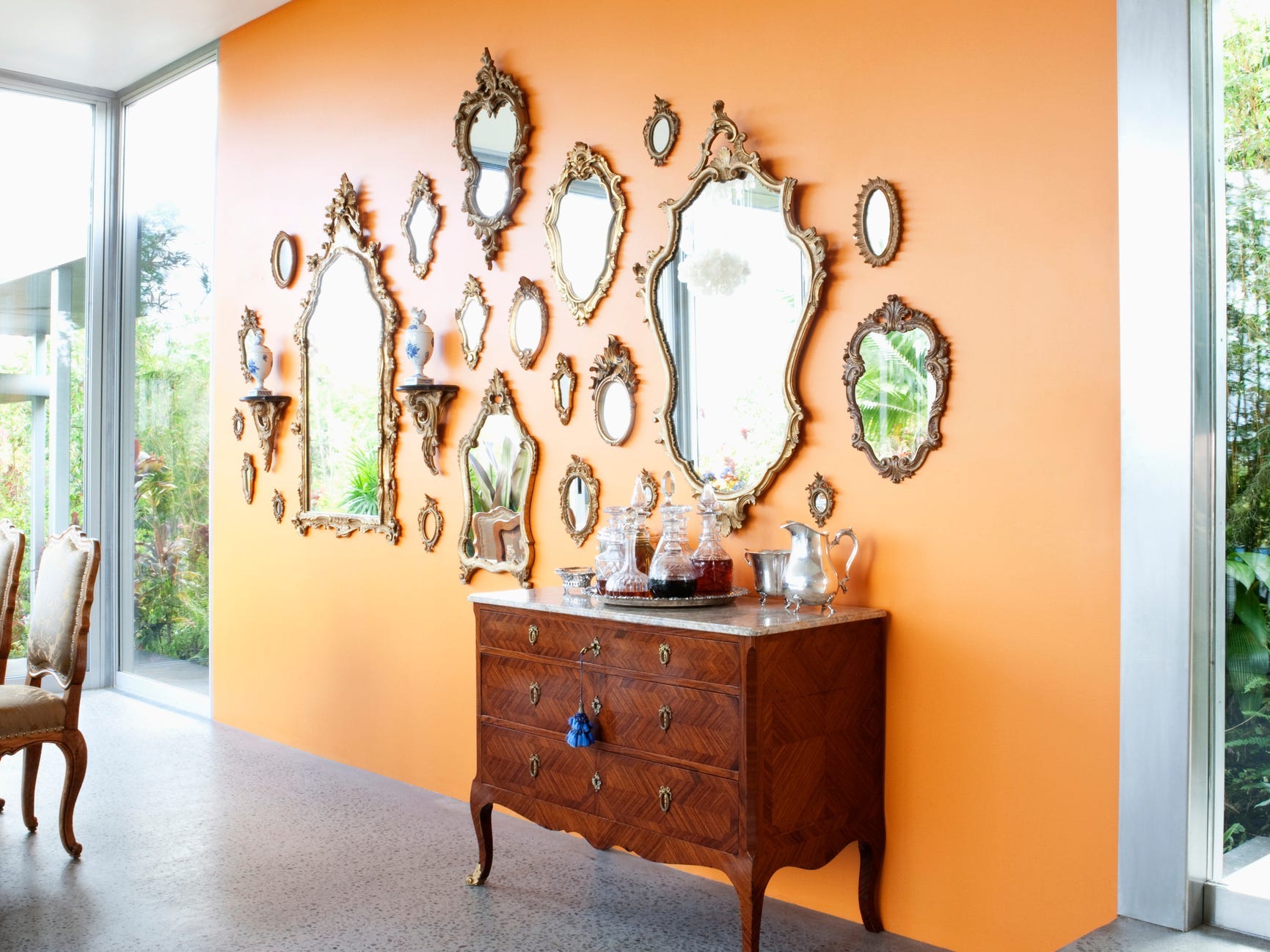
Robert Nicholas/Getty Images
"I suggest incorporating mirrors into the space," shares Alex Bass, art historian at Salon 21. "They make the space feel larger and the art pieces look more dynamic."
Leave some pieces unframed
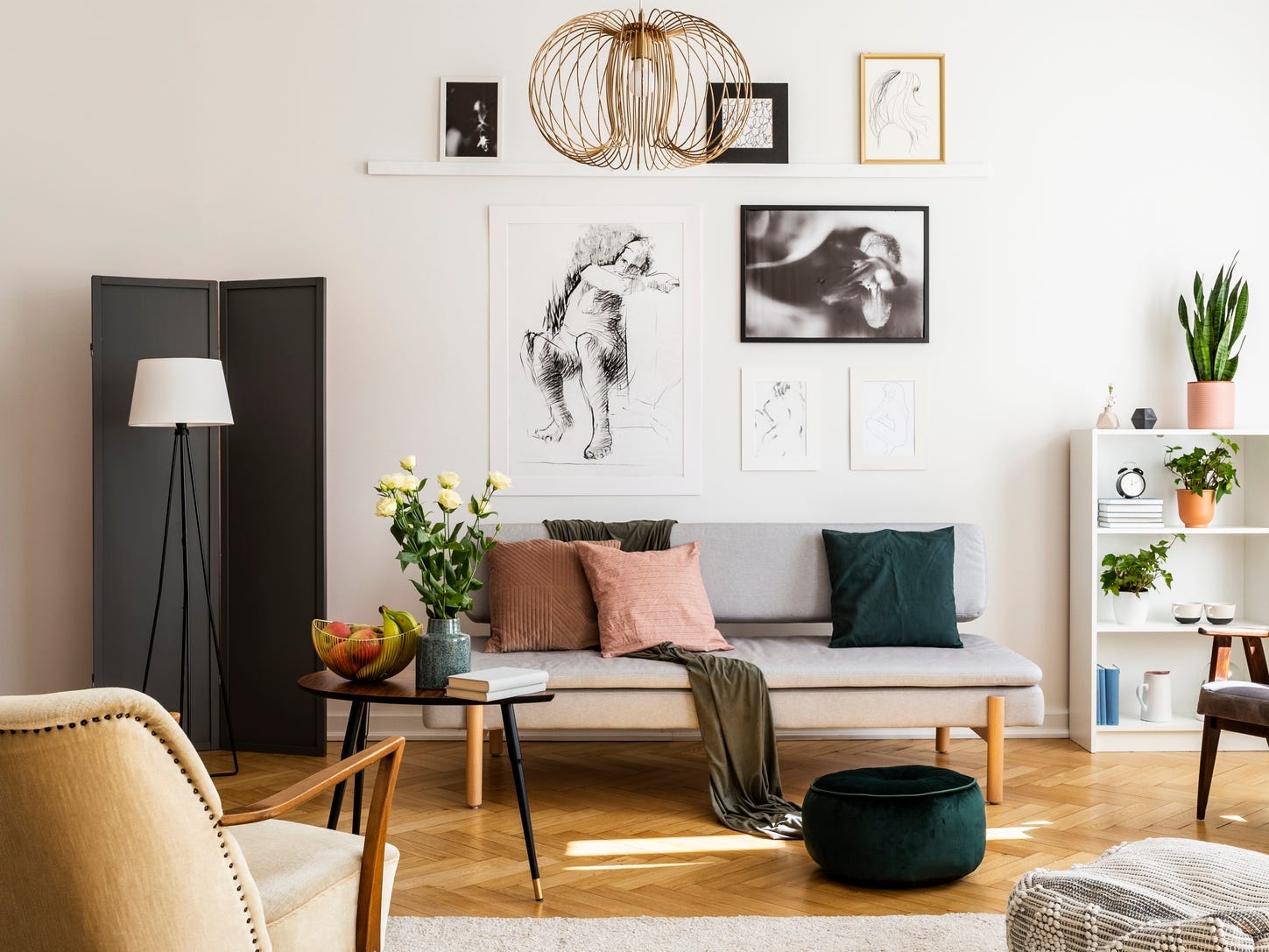
KatarzynaBialasiewicz/Getty Images
Frames can get expensive, but if you're more avant-garde, Bass suggests considering mixing frames or even keeping some pieces (specifically canvas) unframed. "The texture mix creates a visually appealing approach," Bass explains.
Opt for eclectic art and photography
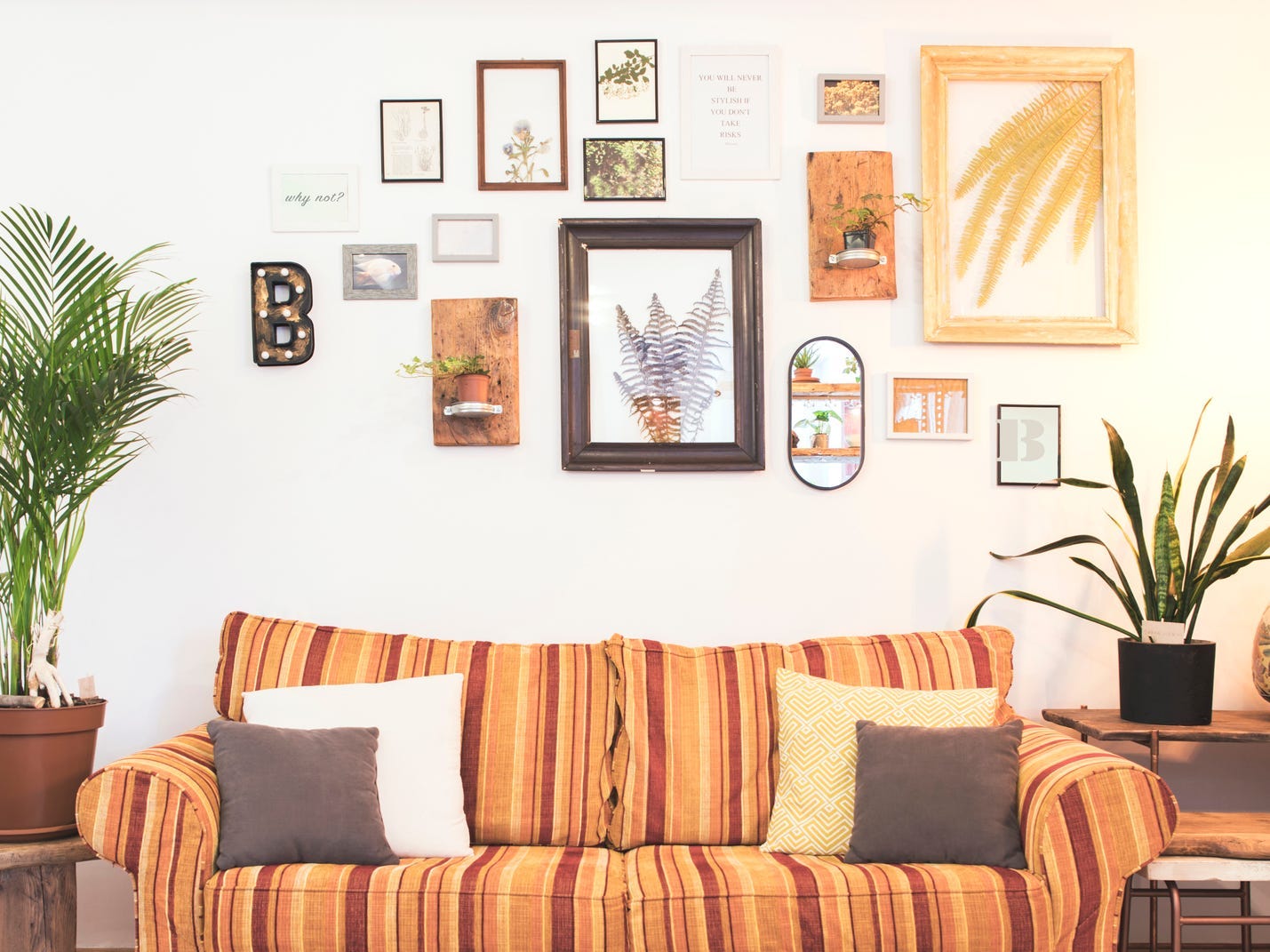
FollowTheFlow/Getty Images
You might be tempted to opt for a matching series of prints or photography, but Bass suggests collecting from all over. "Seek out friends' pieces, Etsy finds, or even your own photos," says Bass.
Howie also suggests opting for mismatched frames if you're looking for a more eclectic aesthetic - which can help cut down the cost of exclusively buying new and uniform frames. "Other more ornate frames can add layers of narrative," she explains. "For example, a gold hand-carved frame may be best for an artwork that is historic."
Don't overlook symmetry and balance
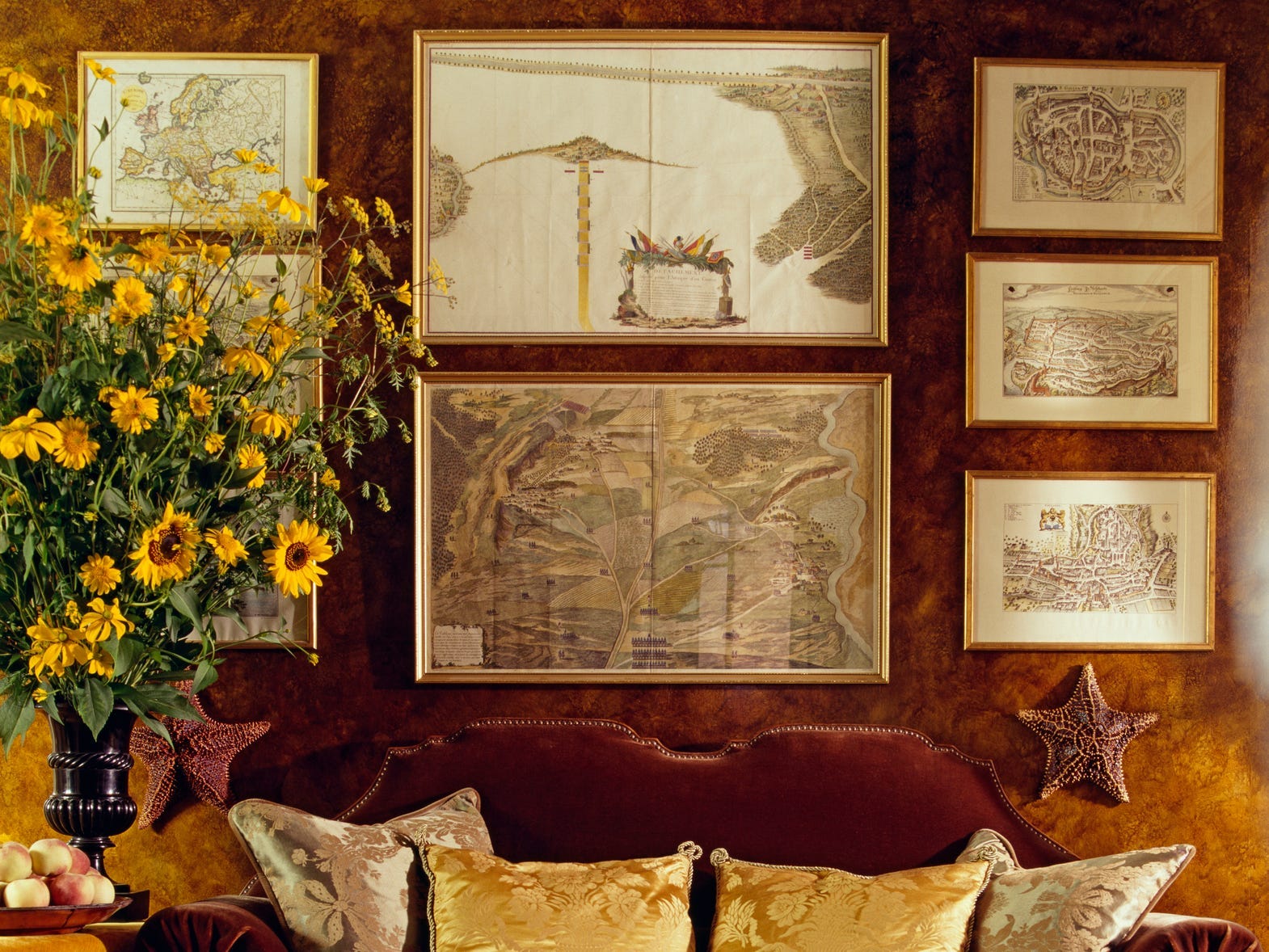
Pieter Estersohn/Getty Images
"It's important for the grouping as a whole to have some symmetry and balance," explains Lisa Modica, interior designer at Cherry Tree Interior Design. Consider choosing pieces of complementary sizes to place on either side of your gallery in order to ensure a symmetrical shape.
Insider's takeaway
Although a gallery wall looks like it requires minimum effort for very aesthetically pleasing results, there are certain steps you need to take in order to ensure your wall looks properly balanced and level. Opt for quirky art, silly photo memories, and even second-hand frames or unframed canvases - but don't overlook the importance of planning out your layout and taking care to properly space out and level each and every frame.
